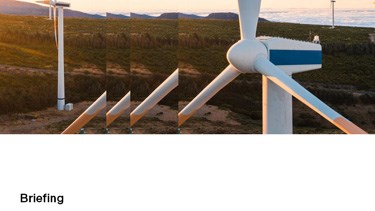EU merger control in a changing world: European Commission initiates broad and ambitious review of Merger Guidelines
Background
After more than 20 years, the time has come for a thorough review of how to interpret and apply EU merger control law. On 8 May 2025, the European Commission launched a public consultation on the revision of the guidelines for applying the EU Merger Regulation to mergers and acquisitions involving competitors (2004 Horizontal Merger Guidelines) and involving companies which are not direct competitors (2008 Non-Horizontal Merger Guidelines) (collectively known as the “Merger Guidelines”).
The Merger Guidelines are not legal provisions. However, as “soft law”, they provide guidance on assessing market concentrations and serve as an important reference for the European Commission, EU courts (and even national authorities and courts) in understanding the substantive concepts of the EU Merger Regulation. The Merger Guidelines form an integral part of the EU’s merger policy, allowing businesses to assess their proposed transactions and the likelihood of clearance with or without remedies, thereby facilitating much-needed legal certainty.
Evidently, a lot has changed over the past 20 years. Two decades of EU case law and the emergence of new markets amidst globalisation, digitalisation, decarbonisation, and new economic and geopolitical challenges have made a revision of the Merger Guidelines inevitable. The consultation is also a timely response to explicit calls for the revision of merger policy in the Draghi Report on the future of European competitiveness (see our Alert). European Commission president Ursula von der Leyen also requested that Competition Commissioner Teresa Ribera in her Mission Letter modernise competition policy through a review of the Merger Guidelines (see our Alert), a request also echoed in the EU Competitiveness Compass (see our Alert).
What to expect
Without changing the law, the European Commission intends to explain and potentially partly rewrite its interpretation of substantive concepts of merger assessment to better consider resilience, efficiency and innovation, time horizons, the investment intensity of competition in strategic sectors, sustainability/decarbonisation and the changed defence and security environment. The EU’s assessment of transactions may shift towards a more holistic approach and potentially consider broader policy objectives and even more often out-of-market effects, instead of focusing on short-term price effects. At the same time, the European Commission understands the difficulties this would pose as the Merger Guidelines must remain a comprehensive, predictable and lasting framework.
How to get involved
The European Commission has launched a simultaneous two-pronged consultation process. First, a general consultation seeks high-level feedback from citizens, businesses and associations on the broader objectives of EU merger control, potential inconsistencies and ways to simplify and reduce costs. Second, an in-depth consultation invites stakeholders with technical merger control expertise to provide input on the following seven key issues (on which the European Commission has prepared corresponding background papers):
Competitiveness and resilience are central issues addressed by the Draghi Report. Mergers and acquisitions may help companies to increase productivity and to achieve scale in global markets. The pandemic, the Russian war against Ukraine as well as the green and digital transitions demonstrate the need for reliable and robust supply chains. The consultation raises questions about how qualitative and quantitative tools in the competition assessment can be applied to the analysis of strategic resilience, and resistance to external shocks. It raises the question of how innovation and investment incentives that are created – or hindered – by mergers and acquisitions should be assessed and how the European Commission should consider the advantages companies have due to their global presence.
Market power relates to the issue of which structural features and other indicators are most helpful for assessing such power. Market shares and concentration levels will likely continue to provide a useful first indication, but the European Commission is also interested in understanding how to apply other criteria, such as sales and capacity shares, diversion ratios, profit margins etc. The consultation requests input on such features as well as on the use of safe harbours and rebuttable presumptions, and on the evaluation of coordinated effects and non-horizontal effects.
Innovation and other dynamic elements in merger control concern the assessment of non-price parameters, such as the effect of a merger on innovation and long-term investments. With Draghi’s suggestion of an “innovation defence”, and the call in the Competitiveness Compass to give innovation adequate weight considering the European economy’s acute needs, it is a challenge to assess and balance possible innovation benefits with potential harms to competition. Merger control is a forward-looking exercise and, as such, fraught with uncertainty. This is particularly true when assessing a transaction’s impact on dynamic parameters of competition such as innovation or long-term investments. The European Commission is therefore keen to emphasise that the input sought from stakeholders should be specific. In addition, the European Commission has called for tenders for an economic study aimed at better understanding the dynamic effects and how they can be taken into account when assessing mergers and acquisitions.
Sustainability and clean technologies have already been considered by the European Commission in (complex) transactions as a non-price parameter of competition, but “green efficiencies” capable of outweighing anticompetitive effects have not been accepted thus far. The consultation seeks more insight into the methodology and parameters to be included in the competitive assessment to take account of sustainability considerations, as well as into the quantification and verification of “green efficiencies”.
Digitalisation is directly connected to the EU’s competitiveness. The phenomena seen in fast-moving digital markets, such as big data, network effects, winner-takes-all dynamics and the accumulation of closely related products and services in digital ecosystems have led the European Commission to deviate in part from the classic horizontal/non-horizontal merger assessment framework. The consultation asks how to take account of the specific competitive aspects and dynamics in the merger control assessment.
Efficiencies have not yet induced the European Commission to clear a single anti-competitive transaction. The crux is that a transaction may generate efficiencies for the merging parties, but that these are not necessarily passed on to consumers and therefore cannot sufficiently offset the potential harm. The consultation puts the cumulative criteria used so far to the test – efficiencies must (i) benefit consumers, (ii) be merger-specific; and (iii) be verifiable – and considers how efficiencies can be interpreted in light of broader policy objectives such as sustainability and innovation.
Public policy, security and labour market considerations are addressed separately and explicitly recognised as policy objectives which indirectly safeguard democratic institutions, the balance between public and private power, media plurality, a competitive defence industry and quality jobs for Europeans. Security and defence are sensitive areas involving national security interests which enjoy legal protection. The European Commission has never blocked a transaction in the defence industry. Nevertheless, the consultation asks whether more guidance would be helpful as well as for feedback on media plurality and labour markets.
Timing
Stakeholders are invited to make their views known until 3 September 2025. Meetings with stakeholders, public events and workshops are expected after this deadline. There will then be another consultation on the draft of the revised Merger Guidelines. The new Merger Guidelines are unlikely to be published before late 2027.
The in-depth consultation addresses a diverse array of policies and topics, allowing stakeholders to express a wide range of considerations and alternative suggestions. In our view, the greatest impact can be achieved by focusing on exactly how the European Commission may take those considerations into account in individual cases.
Well
informed
Subscribe to our newsletter now to stay up to date on the latest developments.
Subscribe now










